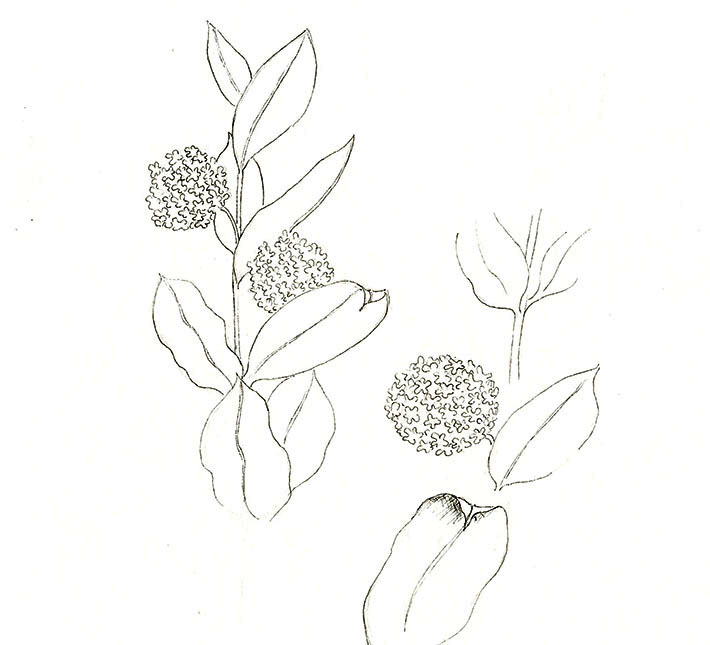
Studying flower details
Breaking flowers down into parts and not trying to draw the whole flower at once makes the whole process less confusion. When you have chosen the flowers you want to sketch, it’s time to take a closer look at details. Look closely at:- The number of petals
- What the center of the flower looks like
- How the flower grows on the plant
- The size and shape of the leaves
- The placement of leaves on the stem
- The stem’s rigidity

Flower parts to know
While observing the flower you aim to sketch, you’ll need to notice a few parts of the flower’s identity:Receptacle
All flowers have a receptacle, though some are more bulbous than others. If this part of the flower is visible in your artwork, make sure that it is correct in shape and size.Sepal
These are the leaf-like outer coverings of a flower bud that unfold and become like a pedestal or a collar for the flower.Anthers
Thin, delicate spikes that shoot from the center with little seed shapes on the ends. Not all flowers have anthers.
Twisty stems and spiky flowers
When you want to draw flowers that have more freeform shapes, loosen your drawing hand and lighten your touch. With a little practice, you will get the shapes down just right. Study the stem formation, curves and lengths before you start to sketch. Roughly draw in the general shapes of the flowers and leaves. Then, go back and refine the sketch.

Where is the rest of the stem formation image?